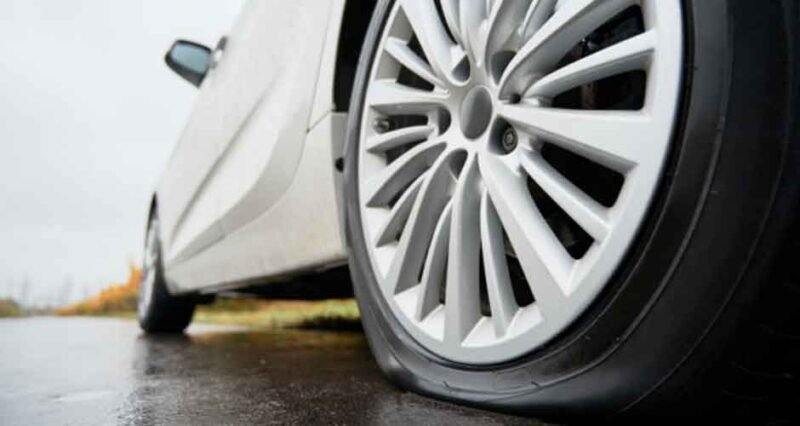
Tires are crucial to both the performance and safety of automobiles. To fulfill the needs of contemporary drivers, tire technology has advanced tremendously over time. The run flat tire is one innovation that has gained popularity. In this article, we examine the idea of run-flat tires, discuss their advantages and disadvantages, and offer a succinct list of dos and don’ts in relation to these special tire types.
What Run-Flat Tires Are
Run-flat tires are a unique kind of tire made to let a car move safely for a short distance after suffering from a puncture or lack of air pressure. Run-flat tires, in contrast to normal tires, have strengthened sidewalls and an exclusive internal structure that provide support even when the passenger tire loses air. With this cutting-edge design, drivers may keep control of their cars and travel to a repair shop without having to change a tire on the side of the road.
Run-Flat Tires’ Advantages
- Improved Safety: Run-flat tires are made to keep the stability of the car even after a puncture. This gives drivers more time to respond and choose a safe area while greatly lowering the likelihood of accidents brought on by unexpected tire blowouts.
- Convenience: The ease of use that run-flat tires provide is one of their most important benefits. Drivers are no longer need to struggle to change a tire alongside a busy road or in poor weather. This can be particularly helpful for folks who might not have the physical stamina or the knowledge necessary to change a tire.
- Extended Mobility: Run-flat tires allow motorists to continue traveling after a puncture for a predetermined period (usually 50 miles). By enabling drivers to travel to a safer place or a nearby service station, this feature is especially helpful in regions with restricted access to repair facilities.
- Trunk Space and Weight: Traditional spare tires weigh more and take up valuable trunk room, which is why they are rarely used. Run-flat tires do not require a spare tire, freeing up additional storage space and possibly increasing fuel efficiency.
- Peace of Mind: Having run-flat tires on your car can provide you peace of mind, especially if you routinely travel long distances or in outlying locations.
Drawbacks of Run-Flat Tires
Distance Limitation: Run-flat tires extend mobility, but they are not a long-term fix. Drivers should be aware that there is a maximum distance a run-flat tire can be driven before further harm to the tire or the vehicle results.
Ride Comfort: Run-flat tires may have a somewhat rougher ride than conventional tires due to their strengthened sidewalls and distinctive construction. This is a cost-benefit analysis for the additional security and convenience they offer.
Repairability: Run-flat tires may not be repairable if they have been driven on while flat. As a damaged run-flat tire frequently needs to be completely changed, this may result in increased expenditures.
Cost and Availability: Compared to ordinary tires, run-flat tires could be harder to find and more expensive to buy. Additionally, some tire shops might not have the tools or knowledge necessary to service run-flat tires.
Compatibility: Run-flat tires cannot be installed on all vehicles due to compatibility issues. It’s critical to confirm that your vehicle is suitable with this type of tire by speaking with the manufacturer or a reputable tire shop.
Dos and Don’ts of Run-Flat Tires
Things to do:
- Adherence to Speed and Distance Limits: When driving on run-flat tires, abide by the manufacturer’s guidelines for speed and distance restrictions. Overstepping these boundaries could endanger your safety and worsen tire damage.
- Maintain Recommended Tire Pressure: Run-flat tires can function with less air pressure, but for the best performance and longevity, it’s still crucial to maintain the recommended tire pressure.
- Regular Tire Inspection: Tires should be inspected on a regular basis, just like any other tire. To detect problems early, look for wear, damage, or punctures.
- Seek Professional Help: Rather than attempting to identify or resolve the problem yourself, it is advised to seek professional assistance if you suspect a puncture or loss of air pressure.
Don’ts:
Ignore Warning Signs: Tire pressure monitoring systems (TPMS) are frequently seen in contemporary vehicles with run-flat tires. Don’t dismiss the system’s warnings about low tire pressure or damage.
Tire Mixing: Run-flat tires should ideally be used in sets of four. Run-flat and conventional tires should be mixed. Uneven wear and handling concerns may result from using conventional and run-flat tires together.
Exceeding Load Capacities: Run-flat tires have certain load capacities, just like any tire. Beyond these weight restrictions, don’t overload your car because it could harm the tires and the whole thing.
Attempting DIY Repairs: DIY Run-flat tire repairs might worsen the situation, especially if you do so after you’ve already driven on the flat tires. Leave replacements and repairs to the experts.
In conclusion, run-flat tires are a beneficial development in tire technology that provide modern drivers with greater safety and convenience. Understanding how to operate and maintain them effectively helps enhance their performance and help make driving safer even though they have their share of advantages and disadvantages. You may make the most of this cutting-edge tire alternative by following suggested rules, getting professional assistance when necessary, and being aware of the limitations of run-flat tires.


